

Canyons School District proposes closing two grade schools and redrawing boundaries
By Julie Slama | j.slama@mycityjournals.com
With declining enrollment, district leaders say tough choices are needed.
The Canyons Board of Education is considering the closure of two Canyons School District elementary schools for the 2026-27 school year, as part of a broader plan that could eventually affect most of the District’s 31,500 students through school boundary changes.
The District’s long-range planning committee has recommended merging Bella Vista Elementary with Ridgecrest Elementary, both located in Cottonwood Heights. In Sandy, the proposal is to combine Park Lane Elementary and Granite Elementary. The final location of the merged Sandy school has not yet been decided, allowing for community input.
In addition to school closures, the committee, which includes board members, District administration and staff, also aims to better align high school feeder systems—a change that, if not immediate, will eventually impact many students at the secondary level.
“We know since we put this out in May, there has been concerns and we acknowledge that and we know that,” said Canyons Business Administrator and Chief Financial Officer Leon Wilcox, who sits on the committee. “We spent a lot of time all summer studying these issues and what we can do. We want to provide the best education for our students.”
Community input
At the Sept. 2 board meeting, members emphasized the proposals are not final but a starting point for community feedback. Parents at affected schools are being notified, and city officials also will be informed if closures move forward.
In accordance with Utah Code 53G-4402(24), the District will host public hearings to gather input. Community members can provide feedback at scheduled board meetings or through the District website, where comments
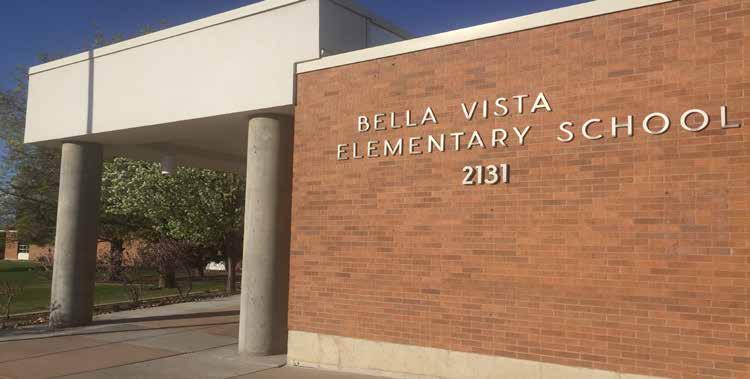
will be shared with both the board and the planning committee.
Three public hearings have been scheduled:
• 6 p.m., Oct. 15, board members will meet with Granite, Park Lane and Willow Canyon elementaries’ communities at Granite Elementary, 9760 S. 3100 East.
• 6 p.m., Oct. 16, they will meet with communities from Bella Vista, East Midvale and Ridgecrest elementaries at Bella Vista Elementary, 2131 Fort Union Blvd.
• All other proposed boundary changes will be discussed at the 7 p.m., Oct. 30 meeting at the District office’s Canyons Center, 9361 S. 300 East.
Each of the upcoming hearings are scheduled for one hour.
Following these hearings, Canyons board member Karen Pedersen said a second, likely revised, proposal will be presented at the Nov. 11 board meeting.
A third reading and vote are expected in December. According to state law, school closure decisions must be finalized by Dec. 31 if they are to take effect the following school year.
Committee process
The committee evaluated eight elementary schools: Bella Vista (Cottonwood Heights), Brookwood, East Sandy, Granite, Oakdale, Park Lane, Quail Hollow and Willow Can-
yon (all in Sandy). No middle or high schools were included.
Factors considered included enrollment trends, building age and condition, school capacity and existing specialized programs such as dual language immersion, accelerated studies and special education.
Wilcox emphasized that the primary goal is maintaining high academic standards and opportunities for students. He said the District considers 560 students to be the optimal elementary school size, with approximately three classes per grade level.
Continued page 15
Canyons Board of Education has proposed the closure of Bella Vista Elementary and the consolidation of Park Lane and Granite elementaries in addition to several boundary changes. (Julie Slama/City Journals)
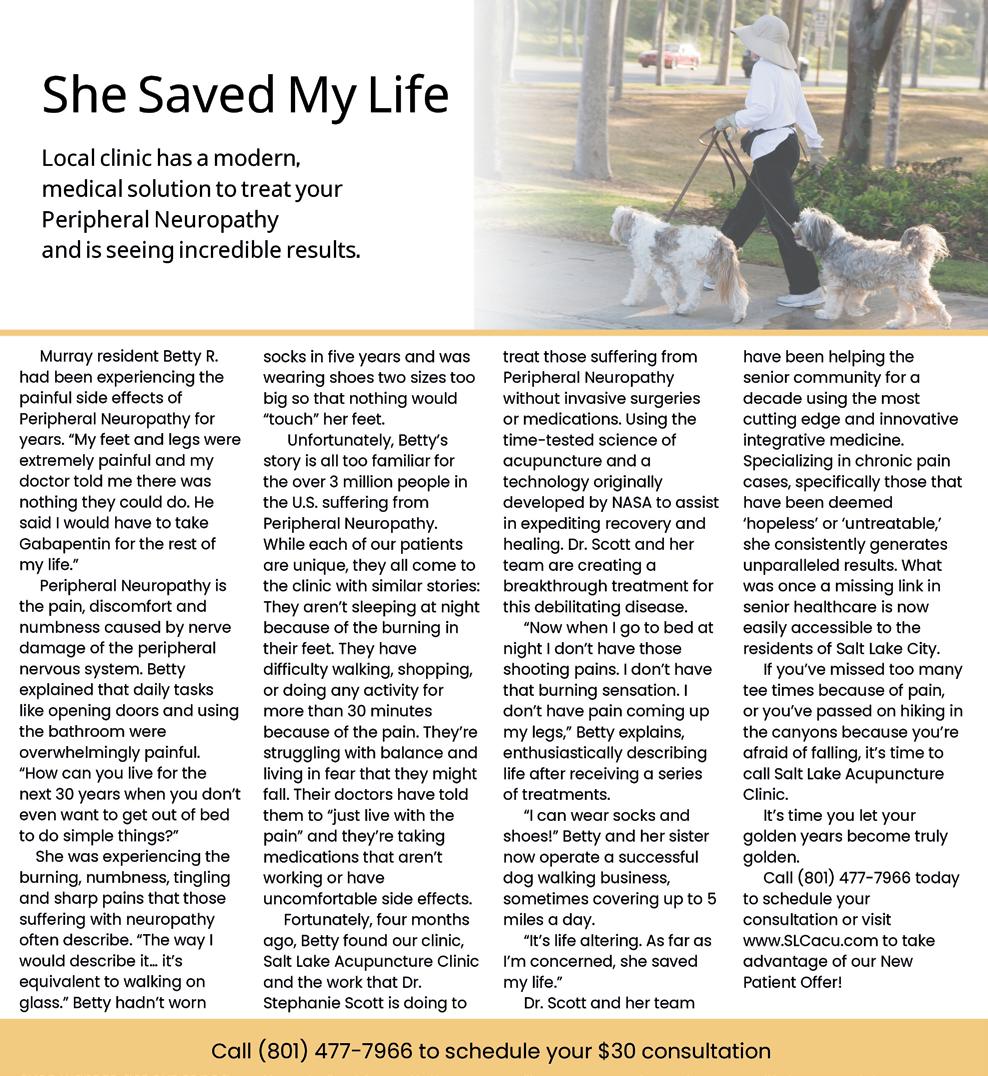
Treating your whole family tree.

Holy Cross Hospitals have been trusted by Utah families since 1875.
For 150 years, Holy Cross Hospitals have cared for Utah families in their most tender, powerful, and vulnerable moments. From newborn checkups to post-op recoveries, we’ve seen generations through their highest highs and hardest days.
We’ve done it all with one purpose: to treat people, not just patients. We care for every person with personalized treatment powered by compassion and respect.
Our belief that we all hold the power to heal helps us provide care that spans generations and stands the test of time.
Learn more at mountain.commonspirit.org/holycross150.
Hundreds of students face off in friendly book battles
From historical fiction to fantasy, students tackled every genre—and came away with memories, certificates and a deeper love for reading.
By Julie Slama j.slama@mycityjournals.com
Theexcitement was unmistakable as Eastmont Middle’s Team Peeta finished each other’s sentences and laughed over their favorite reads. Their enthusiasm matched their success: they had just won Canyons School District’s Book Blitz, beating Butler Middle’s We Love Dictionaries and Indian Hills Middle’s All About Books.
Book Blitz challenges middle school teams to read a curated list of books across genres, then compete by answering questions using book titles—and, when possible, authors. A similar competition, Book Blitz Jr., is held for elementary students.
The book lists are available during the summer and students are already reading for the 2025-26 competition.
Eastmont eighth-grader Tawny McEntire started early, reading through the list last summer. Her teammates split the remaining titles in the fall.
Eighth-grader Mary Halladay credited their friendship to a love of reading—ranging from historical fiction to fantasy—for their win.
“We’re all best friends, and we did it to have fun since we like to read books,” she said. “We work well together, and we all just trust each other enough to go with what other people decide what the answer is.”
Eighth-grader Caraline Herzog added: “We talked things out and listened to each other, that’s important.”
Preparation was key. Tawny created
30 pages of study questions and attended every practice.
“Our team chemistry was a lot better and supportive because we practiced,” she said.
Naming the team was easy, said teammate Millie Rich.
“We were watching ‘The Hunger Games’ and said as a joke, we all are on Team Peta so that’s what we called ourselves,” she said, pointing to their team shirts with a “Studio C” parody quote on the back. “We laughed a lot, but we learned too. ‘Fallout’ was a phenomenal book. I didn’t think I would like it because it’s nonfiction, but I learned more than I think a lot of Americans know about our history.”
Midvale Middle School teacher librarian/ media specialist Judy Rembacz sees the impact of Book Blitz.
“It’s exciting when everyone is reading books, sharing what they read with others,” she said. “They love the competition quizzes, seeing what they know, and it’s good to see how they support one another.”
Mt Jordan Middle teacher librarian Jana Mumford helped with Book Blitz Jr.
“Getting books in kids’ hands is a win and they love the competition aspect,” she said. “I love seeing the younger grades have fun with it. Their enthusiasm feeds right into our programs at the middle school.”
Each middle school brought two teams to the District competition. At the elementary level, 19 schools participated with more than 700 students.
District Library Media Specialist Gretchen Zaitzeff, who organizes the program, praised the teamwork.
“The sportsmanship amongst the teams has been stellar,” she said. “And cheers should go out to the parent volunteers, who along with the school facilitators and coaches, have been working all year with our students to be successful at all the levels.”
Sandy Rotary has supported Book Blitz Jr. for two years.
“Locally, we help our community’s youth and focus on education so Book Blitz fits perfectly,” Sandy Rotary President Brenda Suta said. “We know these kids are the future and education uplifts them to learn and solve things in the world.”
This year, a four-way tie in the early rounds led to a playoff. Peruvian Park, Ridgecrest and Willow Canyon shared the win, with Alta View as runner-up. All four teams received books and book bags.
Ridgecrest fifth-grader Safron Schneider recalled the tense tiebreaker.
“It was nerve wracking when we got called up there,” she said. “We told each other ‘We got this’ and we joked about one of the boys at our school who wore his lucky socks for us, so we thought about that and were able to focus.”
Safron, who read all 12 books, began last summer.
“‘Select’ is about a girl who is a good soccer player, and I also play it, so I could relate a lot. ‘The Last Fifth Grade of Emerson Elementary’ had a lot of fifth-grade experiences I feel a
lot of fifth graders can relate to,” she said.
Aiming to become a writer, Safron values reading.
“Reading always helps me improve my knowledge of words, and I always get lost in a good plot line,” she said.
Granite fifth-grader Brent Fillerup of the “Book Bears” also read all 12 books.
“This was my first time competing and it was really good,” he said. “I wanted to read ‘Cookies and Milk’ as I wasn’t familiar with it and heard it was based on a true story.”
Willow Springs fourth-grader Kate Simons of the “Sugar Readers” was eager to participate.
“I really like books and read every day,” she said. “‘A Wolf Called Wonder’ was a fun book. It was from the point of view of wolf, which I never have thought about before.”
Her classmate, Rebekah Sutton, enjoyed both the books and the friendships.
“I liked ‘Saucy;’ it’s about a pig and I love pigs,” she said. “A lot of the competitions were close, but that’s part of the fun. I’m planning to read all the books this summer.” l
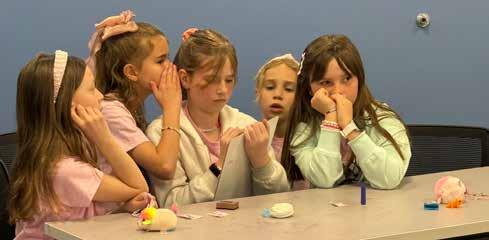
COTTONWOOD HEIGHTS TEAM
The Cottonwood Heights Journal is a monthly publication distributed directly to residents via the USPS as well as locations throughout Cottonwood Heights.
For information about distribution please email hello@thecityjournals.com or call our offices. Rack locations are also available on our website. The views and opinions expressed in display advertisements do not necessarily reflect or represent the views and opinions held by Loyal Perch Media or the City Journals. This publication may not be reproduced in whole or in part without the express written consent of the owner. © 2019 Loyal Perch Media, Inc.
PUBLISHER
Bryan Scott | bryan.s@thecityjournals.com
EDITOR
Travis Barton | travis.b@thecityjournals.com
ADVERTISING EXECUTIVES
Mieka Sawatzki | mieka.s@thecityjournals.com
Lindsay Andreasen | lindsay.a@thecityjournals.com
Jason Corbridge | jason.c@thecityjournals.com
Ryan Casper | ryan.c@thecityjournals.com
Marc Davis | marc.d@thecityjournals.com
COORDINATOR Lydia Rice | lydia.r@thecityjournals.com 385-557-1022 Rack locations are also available on our website.
EDITORIAL & AD DESIGN
Stacey LaMont Ty Gorton
COTTONWOOD HEIGHTS CITY JOURNAL 9500 South 500 West, Suite 205 Sandy, UT 84070
PHONE: 801-254-5974
& Distributed by

In one of the Canyons School District preliminary rounds during Book Blitz Jr., a Draper Elementary team contemplates their answer before showing it to the judges. (Julie Slama/City Journals)

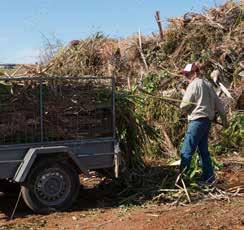
Bridging classrooms: How art and music unite students
A growing Canyons School District initiative brings students with disabilities into general education elementary arts and music classes, fostering empathy, creativity and connection.
By Julie Slama j.slama@mycityjournals.com
WhenJordan Valley fourth-grader Ava Baird and third-grader Markus Heckman stepped off the school bus at Bella Vista Elementary, their faces lit up with excitement.
They’re part of an inclusive arts program that brings Jordan Valley students with severe and profound disabilities into Beverley Taylor Sorenson arts classes at local Canyons School District elementary schools.
Bella Vista BTS teacher Christy Delaney was prepared for Ava and Markus, with two fourth-grade peer helpers ready to assist—or simply be buddies. The lessons are adaptive, ensuring every student can participate.
“There have been other times where some students will use electric scissors to cut things, so Bella Vista students get to learn too about adaptive tools maybe they’re not exposed to and they love to use them too,” Delaney said.
Earlier in the program, students built robots using recycled materials. On this day, they were painting them.
Markus, joined by Bella Vista fourth-graders Paetyn Mills and Beckham Luthi, chose red, white and blue for their robot.
“Markus suggested those colors,” Beckham said about his nonverbal buddy. “He points at what he wants or shows us with symbols and then we do it together. He has a funny sense of humor.”
Paetyn added, “I like having him here; I’m experiencing art in a different way than I would have.”
Delaney said teamwork and collaboration were part of the lesson.
“We’re working on interpersonal relationships between the students, how they can listen to somebody else’s ideas, and take everyone’s input to make a decision. Sometimes that’s a struggle sometimes in fourth grade,” she said. How the program began
The partnership began in 2017 through the initiative of Jordan Valley BTS teacher Jonathan Hale, who co-designs and co-teaches the lessons. After a pause during the pandemic, the program was revitalized and expanded.
“The BTS program offered research collaboration with the University of Utah and helped fund it,” he said. “Our research is learning how to adapt and use art to help kids socialize. It’s important these Jordan
Valley students get exposure to their peers, and they do things they typically wouldn’t do at their school.”
Originally piloted at Sprucewood Elementary with select students, the program now is offered to all Jordan Valley students across several elementary schools. Groups participate in art or music classes that match their grade level—first grade at Willow Springs, third and fourth at Bella Vista, fifth at Draper, and music for fifth grade at Midvalley.
“We only take a couple students at a time to each school, but the same kids go to the same school so they’re part of the art or music class for the year,” Hale said.
The results have been powerful.
“At another elementary, Jordan Valley students are engaged in art for 45 minutes. Typically, at our school, we get their attention for only five to 10 minutes,” Hale said. “Here, they all look at students and their eyes light up; we don’t ever see that at our school.”
Hale believes the friendships formed are key.
“They are as happy as can be and at Bella Vista, if it works out, we stay for recess because they love to play together,” he said.
At one school, when asked who wanted to walk their Jordan Valley peers to the bus, students eagerly volunteered.
“As they were walking down together, our kids were elated. They had friends around them; I’ve never seen them that happy,” Hale said.
Adapting for success
With backgrounds in art therapy, special education, art education and fine arts, Hale works with his colleagues to design lessons that meet students where they are.
“There are ways to help support students, if you’re aware of them and art can provide structures and flexibility,” he said. “If students have a preference of being on the floor, we will meet them where they’re at, but not all the time. We try to help guide behaviors.”
Hale said when the lesson plan allows for sitting on the floor, many general education students join in too.
Program expansion
This year marks the pilot for inclusive BTS music at Midvalley Elementary.
“We’re learning how to develop music in this model as its new to this programming,” Hale said.
Despite being new, Midvalley Assistant Principal Amy Sandgren said the music program is already a success.
“Midvalley loves the collaboration with Jordan Valley School and the chance to have all students share their love for music,” she said. “Ms. (Meilina) Moore teaches fun, engaging lessons as students learn about various music genres, clap beats—and sing.”

First grade also has been added this year, with three groups visiting Willow Springs Elementary to do spin art, collages, pottery and more.
“We do about everything and adapt it as we can. We intentionally wanted to work with first grade so the kids can make a connection and build friendships. First graders don’t usually have exposure to Jordan Valley students because their development usually focuses on themselves,” Hale said.
Willow Springs BTS art teacher Mindy Van De Graaff appreciates the impact.
“All the art we’re doing is adaptive, so that everybody can be successful,” she said. “Many of the Jordan Valley kids are higher functioning and nonverbal, so they’ll communicate with iPads, which is eye-opening for our kids.”
Positive outcomes for Bella Vista students
Delaney has noticed the impact on her students at Bella Vista.
“Jordan Valley students bring a new perspective,” she said. “Sometimes, they want to add something to the art project that Bella Vista students didn’t think of. This is giving them empathy and understanding.”
The adaptive strategies have also benefited English language learners.
“This benefits everybody when you add in supports,” Delaney said. “It would be neat for our students to take a field trip to their school to see their environment and supports—and it gives those students a chance to show and be proud of their school.”
Hale has seen growth in partnership students.
“They’re learning their peers find as much joy out of coming to art and doing
projects as they do,” he said. “They’re learning to have patience, to see everyone has different needs, and maybe to help a friend be successful, no matter what their needs are—and some kids can relate. They realize, ‘I need extra time to do something.’ They can see that in their peers so they’re speaking up now for themselves.”
Student growth at Jordan Valley Back at Jordan Valley, the benefits are equally clear.
“It is an amazing program, because our students at our school usually don’t get to hang out with their peers,” said teacher Laura Hoggard. “This is a way for us to see how they’re acting and progressing. This helps them be ready to transition out of our school to their neighborhood schools.”
She’s seen how it affects student behavior, learning and confidence.
“Marcus is one of my students and I can see the impact from the program at Bella Vista. He behaves a lot better and he’s more focused to learn when he comes back; he’s a role model here,” Hoggard said.
All her students love the chance to display their art.
“We have frames to mount their art. They’re proud of what they do, and they love it,” she said.
Principal Stacey Nofsinger recognizes many things about the program.
“I appreciate many things: the willingness of the principal and the teachers welcoming our students and collaborating with us; the change in environment for our students; making friends; building awareness and acceptance of individuals with special needs; understanding that all kids can learn and play,” she said. “It’s an endless list really.” l
Jordan Valley third-grader Markus Heckman paints alongside Bella Vista students Beckham Luthi and Paetyn Mills in an inclusive arts program.
(Julie Slama/City Journals)
BYU taps Brighton girls lacrosse coach
Melissa Nash will coach both BYU and Brighton teams.
By Jerry S. Christensen j.christensen@mycityjournals.com
Lacrosse is in high demand at Brighton High School. Even before the club sport became a sanctioned sport in 2021 by UHSAA, Brighton lacrosse was attracting record numbers of student-athletes to learn and compete in the fast-paced, contact team sport.
“I played in the first year Brighton had a club sport team. Soccer, basketball, softball didn’t quite appeal to me, but I fell in love with lacrosse. I played through high school and two years at college,” said Haley Korous of her lacrosse experience. The sport has added state championship trophies to Brighton’s Hall of Champions. Brighton girls lacrosse has regularly been ranked as a top-three program in the state over the past decade with Melissa Nash as coach. BYU’s Big-12 Conference lacrosse program also recognized coach Nash’ pattern of excellence and recently hired Nash as its women’s lacrosse head coach.
“It is quite literally my dream come true to be a full-time coach. My happy place is on a lacrosse field,” Nash said. She grew up playing every sport available: tennis, soccer, basketball, gymnastics and horseback riding. She started playing lacrosse as a freshman at Highland High to keep in shape for soccer. But because Highland didn’t have enough girls in that early era she joined the Olympus lacrosse team.
“I fell in love with lacrosse and it became my whole life—camps, clinics, tournaments. Every birthday present was wrapped lacrosse balls or a new stick or some new re-
bounder,” Nash said. She qualified for Team Utah (similar to the Utah National Team now which is the team for the best players in Utah) and traveled to represent Utah at tournaments throughout high school. Nash was highly recruited for next level play at multiple universities. The BYU campus caught her fancy where she committed and where she collected high honors: Rookie of the Year, MVP, Top Scorer and captain.
After a stand-out career with BYU lacrosse she naturally moved to coaching. At Skyline High School she coached under head coach Elise Caffee and whom she considers one of her many mentors whom she continues to adore. They took the Skyline team to the Division 1 State Championship that year (2013). She then took her considerable talent and energy to the grateful students of Brighton where the program has flourished under her care.
Every year, Nash has qualified players to be recognized as USA Lacrosse All-Americans and Academic All-Americans. This is significant because the All-American designation is reserved for only the top-10 players across the state and it is the top award a high school student-athlete can attain. Actually there is another award that goes each year to the top female lacrosse athlete in the state each— the Jackie Pitts Award. This national award is given to the athlete who demonstrates exceptional service to her team, school and community, while embodying the spirit of the game through leadership, dedication to lacrosse’s growth in their area and exemplary teamwork. Under Nash’ guidance over her decade at Brighton, four Brighton students have been recognized as Jackie Pitts Award recipients: Baylee Bruce, Mary Stubben, Ayla Cole and Emma Henderson. Nash herself has been named Coach of the Year three times while at Brighton.
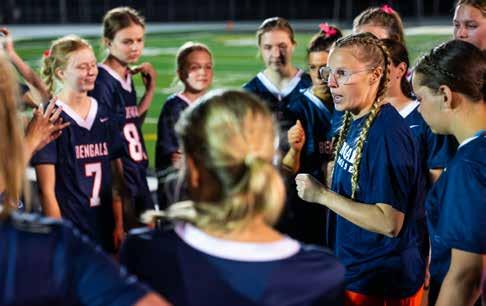
Nash, besides having taught health and student government at Brighton, is also director and head coach of Utah Elevate, a club team of 300 players across Utah who play lacrosse year-round. “Elevate is something I’m really proud of. We’re known as a talented, fun, positive and energetic team. That is the culture we bring to Brighton as well,” Nash said.
Speaking of Brighton, the supportive administration at the school have arranged matters such that Nash can continue coaching girls lacrosse at Brighton. “BYU practices in the morning, Brighton in the evening. It will be a balancing act, but I have incredible assistant coaches on both teams who will help keep things going. And Garrett Wilson, AD at Brighton, has been so supportive too,” Nash said.
Wilson said about Nash: “Melissa Nash is an outstanding coach who cares deeply about her athletes and works tirelessly to help them succeed. She has been a tremendous asset to Brighton athletics and we feel fortunate that she will continue to coach with
us while taking on this exciting new role as the head coach of BYU Women’s Lacrosse.”
“Nash has dedicated her entire life to training young women (players and coaches) to be the best they can be both on and off the field. She’s had an extreme impact on hundreds of young players lives, and mine as well. Go Nash and go Cougs!” said Chelsea Owens Worth, a Brighton graduate who was assistant coach to Nash for six years.
Nash said, “There is nothing more rewarding than watching a lightbulb moment happen for one of your players. Or see a drill pay off in a game. Or watching my players create those lifelong relationships that can only come from competing together on the field. I’m lucky to have had incredible coaches as mentors and huge life influences during my playing career—John Tomasi, Lindsay Aerts, MacKenzie Harding, Ashley Lower, looking at you!— and I hope to be the same for my BYU and Brighton players!”
Brighton will bring the team to Freestone Field next spring lead by a Big 12 Conference coach. l
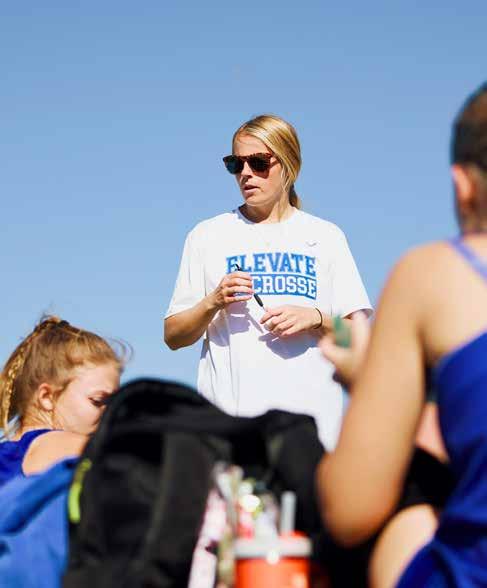
Coach Melissa Nash has been instrumental in the success of Brighton’s girls lacrosse. (Photos courtesy Melissa Nash)
NEW AREA
Back to school with big changes
Improvements




By Julie Slama j.slama@mycityjournals.com
On Aug. 1, some Eastmont Middle School families were caught off guard after learning students would begin the school year with remote learning, a plan expected to remain in place at least through Labor Day.
The message explained the reason for the delay: “Due to construction delays, Eastmont Middle won’t be ready in time for the start of school. Some key safety and instructional items such as ceiling tiles, beams, working restrooms, drinking fountains, schoolwide Wi-Fi, projectors, and cafeteria access are not yet in place. Simply put, the renovation project is not completed to the point that it would be safe for our students to return to the building.”
A follow-up notification provided more details which arose the previous week: “Two walls that the structural engineers deemed were not load bearing actually were. The walls are currently being supported by 4x4 beams until the metal beams arrive. Without these in place, the ceiling grid cannot attach, and those are the two things we need in place for the fire marshall (sic) to allow occupancy.”
The email from the school’s administrative team also included information on Chromebook pickup and available tech support during remote learning. In addition, a follow-up announcement from the
Canyons School District noted grab-andgo breakfasts and lunches would be provided for students, and portions of the school’s lower level would be opened to those without internet access at home.
Eastmont, which is undergoing a $13-million renovation, is one of several projects receiving upgrades throughout Canyons School District. More than $45 million in upgrades are currently being carried out, with about $21 million allocated specifically for renovation projects at Eastmont Middle and Corner Canyon and Hillcrest high schools.
The funding comes from a lease-revenue bond authorized by the Canyons Board of Education.
“We borrowed the money back in April of ’24, about 15 months ago, and we’ve been doing improvements since,” said Canyons Business Administrator and Chief Financial Officer Leon Wilcox. Eastmont Middle School
Eastmont’s renovation began last year with the installation of a new roof and a retention pond designed to prevent future flooding on the campus. The project includes updated restrooms, and refreshed classrooms featuring new carpet, paint and lighting.
Ongoing plans for the library include a redesign which incorporates space from the old computer lab, with walls being removed to create a larger area. It also includes new shelving, replacing outdated bubble glass with clear panes.
Hallways, the cafeteria, locker rooms, and the gym are receiving new flooring, and an elevator is being installed in the decades-old building.

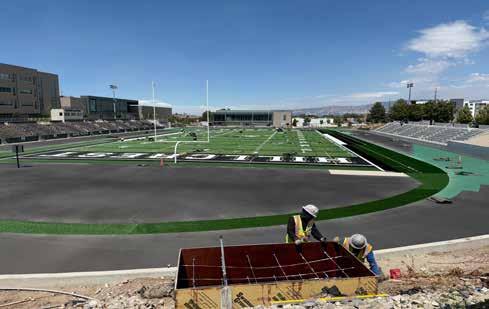
“It’s going to look like a whole new school on the inside,” Wilcox said.
Principal Stacy Kurtzhals said the renovation uncovered some quirky surprises; when some lockers were removed, “treasures” of dated candy and snack bags were revealed behind them.
“I’m looking forward to the building looking as good as the teaching and education that happens there,” she said. Corner Canyon High
At Corner Canyon High School, about $13 million is being invested in upgrades. The work began with the installation of a secure entry vestibule and new artificial turf for the baseball and softball fields.
A new turf soccer field is expected to be completed in time for the fall season, and a new practice field for soccer and la-
crosse is currently under construction. By the end of the year, the school’s new field house is slated to open, complete with an indoor practice football field and a weight room.
Additional facility improvements across the district
• Brighton High: A new teen center featuring washers, dryers, showers and a food pantry is set to open this fall. A new employee daycare facility is also on the way.
• Indian Hills Middle: Construction is underway on a new choir room and an expanded band room.
• Albion Middle: The school’s kiva area is scheduled for updates this fall.
• Sandy Elementary: New carpeting will be installed. l

















Eastmont Middle School’s bathrooms were among many areas receiving upgrades during a $13-million renovation. (Stacy Kurtzhals/Eastmont Middle)
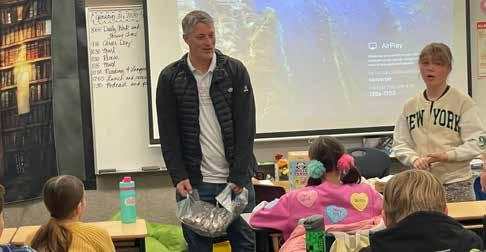
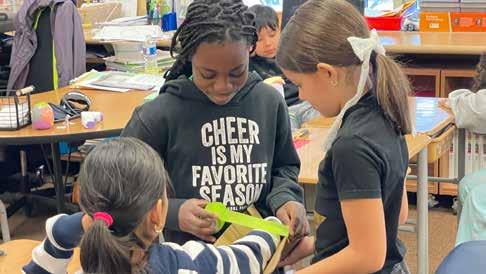
Real jobs, real talk: Career days connect kids to future professions
Hundreds of students get a taste of future careers through hands-on lessons, advice and real world insights from community professionals.
By Julie Slama j.slama@mycityjournals.com
Some Lone Peak Elementary students might find themselves rubbing the quarter Drew Pearson handed out, remembering how he once counted 4,000 of them from his car wash change machine before switching to mobile phone tap payments.
Or perhaps they’re thinking about how he keeps hot water flowing through the tubes year-round to stop it from freezing when the temperature drops below 32 degrees.
“It’s important to provide quality service people expect and to expect to meet challenges in any job,” said the Classy Chassy car wash owner in Cottonwood Heights to the students during their career day. “There may always be rude people and malfunctions in a job, but it’s how you approach it and respond to it that counts.”
Pearson was one of hundreds of profes-
sionals who visited local elementary schools this past year for career day presentations. Speakers shared details about their educational paths, how school subjects apply to their work, the pros and cons of their careers, and some of the exciting parts of their jobs. Career fields ranged from water quality and veterinary science to law enforcement, public transit, music and fitness.
Entrepreneur Cody Coonradt, who develops healthcare software, encouraged students to examine the products they use and ask themselves what’s missing—and how they might fill that gap.
“When looking at product management, we need to determine what we’re going to build and how we’re going to build it and what we’re going to charge, not just what it will look like,” he said. “While developing it, we also need to look at ‘are we going the right direction? Do we have the right people? Do we have enough money?’ Do not follow your passion, but rather, follow your curiosity. Passion comes from experience, but curiosity is infinite. Be patient.”
Third-grader Enzo Van Wangower said he learned the importance of staying curious.
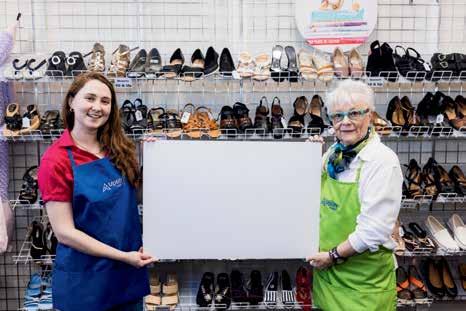
“If I’m curious and it’s fun, I should try to
do it,” he said.
His classmate Duyen Huynh added: “You’ll never know what you can do to help people, like he is with doctors and health care.”
At Glacier Hills Elementary, around 25 professionals participated. Among them was BMW sales manager Ben Beer, who motivated students to aim high now so they’re ready later.
“Try to be the best at everything you do right now and you’ll be ready to do it when you have a job,” he said.
He also answered students’ questions about car manufacturing—how one factory may produce engines and transmissions while another focuses on dashboards. He said white has long been the most popular car color, however, new designs inspired by the aurora borealis are growing in popularity.
At Midvale Elementary, school nurse Tara Aka showed students how to take their blood pressure, wrap their arms with ace bandages and listen to their heartbeats.
“As a nurse, I earned my bachelor’s degree, learned a lot of math and science and got to learn how cool the body is and how it works,” she told them. “Nurses are needed in operating rooms to helicopters on emergencies. It’s a lot of hard work, but it’s rewarding
to help someone in need.”
In a nearby classroom, Mac McCann of Wildworks explained how it takes 30 images to make just one minute of animation. He said how he often records himself moving to use as a reference for character motion.
“To be an animator, you have to make things look believable,” he told students. “We can always get better. If you like to draw a lot, this could be a good career for you—taking the things you draw and bringing them to life.”
Teacher Jill Oaks emphasized career days are important for expanding students’ understanding of the working world.
“They’re learning about the community, whether it’s a chef at Outback Steakhouse or a Coke distributor; they’re learning that people in IT not only help set up a computer, but they solve problems,” she said. “We want our students to actively listen, learn the importance of reading, writing, math and things they’re learning and how it applies to their futures. They can also learn why they need to be responsible and on time, skills that will help them the rest of their lives. We’ll be writing thank-you notes about the impact these people have made to have our students think big and start developing skills now to reach their dreams.”l



Midvale Elementary students learned how to splint an arm and tried it out on a classmate after listening to a career talk about nursing. (Julie Slama/City Journals)
During Lone Peak’s career day, car wash owner Drew Pearson calls students up to test their strength, lifting 4,000 quarters, so they could gain knowledge of one of the skills required in his career. (Julie Slama/City Journals)
2025 GENERAL ELECTION VOTER GUIDE
COTTONWOOD HEIGHTS VOTING INFORMATION SALT LAKE COUNTY VOTING INFORMATION
In Cottonwood Heights, six candidates are campaigning for a seat on the city council. You’ll learn more about each of them as you continue to flip through this Voter Guide.
• Gay Lynn Bennion & Mike Weichers are running for Mayor
• Ernie Kim & Ellen Birrell are running for the District 4 council seat.
• Shawn Newell & Randy Prazen are running for the District 3 council seat.
Throughout the greater Salt Lake County area, voters are encouraged to pay attention to important calendar dates (like mail-in deadlines) and locate the most convenient ballot drop box.
Residents have a few different options to submit their ballots, after receiving their ballot and prepaid envelope in the mail close to two weeks before the election date.
For voters planning to vote-by-mail, ballots must be received by 8 p.m.. on election day (postmarks don’t count). In other words -- mail early.
In previous election cycles when residents were able to postmark their ballots on the day of the general election. Per the recently passed H.B. 300, voters do need to make sure their ballots are physically ‘in-hand’ at the Salt Lake County office on election day.
While registered voters do have the option to send in their vote-by-mail ballot before Nov. 4, they also have the option to vote in person. Check the accompanying list of Vote Box locations to find the ballot box nearest you. Similar to mail-in voting, ballots must be dropped off before 8 p.m. on election day.

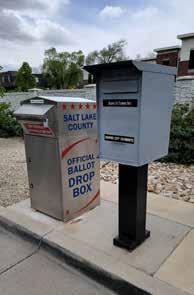
Hey Voters! Please review the following voting information directly from Salt Lake County before submitting your ballot.
Nov. 4 is the General Election - Vote Centers and drop boxes will close promptly at 8:00 p.m.
Important Dates
Oct. 10 - Salt Lake County will host Logic & Accuracy Tests where the public is invited to attend live demonstrations of voting equipment.
Oct. 14 - Ballots being to be mailed (21 days before the election as per Utah’s legislation).
Nov. 18 - Board of Canvassers Meeting where each city will certify results after presented to the City Recorders.
Vote Box locations:
Residents can vote by mail or in-person at various drop box locations throughout Salt Lake County:
County - Salt Lake County Government Center (2001 State St.)
Cottonwood Heights - City Hall (2277 Bengal Blvd.)
Draper - City Hall (1020 Pioneer Rd.)
Holladay - City Hall (4280 S. 2300 E.)
Herriman - City Hall (5355 Main St.)
Midvale - City Hall (7505 Holden St.)
Millcreek - Common (1354 E. Chambers Ave.)
Murray - Post Office (5025 State St.)
Sandy - City Hall (1000 Centennial Pkwy.)
Sandy - Senior Center (9310 S 1300 E)
South Jordan - City Hall (1600 W Towne Center Dr.)
South Salt Lake - Granite Library (331 S. 500 E.)
Riverton - City Hall (12830 S Redwood Rd.)
Taylorsville - City Hall (2600 W Taylorsville Blvd.)
Wet Jordan - City Hall (8000 S Redwood Rd.)
West Jordan - Ron Wood Park (6000 W New Bingham Hwy.)
West Valley - City Hall (3600 S Constitution Blvd.)
Register to Vote:

Voter Registration website
Residents can register to vote online up to 11 calendar days before the election (before 5pm). Registration must be submitted and received before Tuesday, Oct. 28 to receive a ballot in the mail. A valid form of ID, accurate address information, and date of birth is required to register. Residents can register either: online by visiting the State of Utah’s website (see adjacent QR code); through mail by filling out the Formulario de Inscripcion por Correspondencia Para Votantes (Voter Mail-In Registration Form) found on the County’s website; or in-person at the 2001 S. State St. office. Same-Day registration options will also be available at vote centers. Learn more about voting information through Salt Lake County’s website at: saltlakecounty.gov/clerk/elections. Or by directly emailing: vote@saltlakecounty.gov.
QUESTIONS
COTTONWOOD HEIGHTS MAYOR
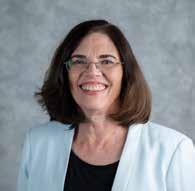
Do you believe current property tax revenue is being used effectively? How so?
Thinking about fiscal responsibility—what values should your local budget reflect? How do you plan to balance those values?
What systems would you support to hold local officials accountable when transparency standards aren’t met?
What is your stance on local government cooperation with ICE?
What is your stance on the proposed canyon gondola?
GAY LYNN BENNION
gaylynnbennion.com
No. First, the current city budget underfunds Unified Fire Authority so that we are short a firefighter at the Wasatch Boulevard Station. With 800 wildfires this year, we are putting emergency workers and our community in danger. The national standard is four firefighters for a fire apparatus, so that two firefighters go into a structure fire and two stay outside. We need to reallocate our budget to ensure full staffing is a priority. Second, when we ignore 500-plus illegal short-term rentals operating in our city for several years, we are leaving Transient Room Tax uncollected, because we aren’t collecting the licensing fee and they may not be remitting taxes, since they aren’t operating legally. We could increase our city revenues by working with experts to set high standards for short-term rental licenses. This is the way to bring this business model under control and increase our city budget.
As elected officials, we value wise use of tax dollars and the need to invest in public safety and public infrastructure, the main responsibilities of government. Our priority should be to fund these basic services. Once we have a clearer understanding of each dollar’s purpose in our budget, perhaps we could try participatory budgeting (PB), which allow citizens to be part of the decision-making process on requests outside of basic city needs. PB is an option our city could explore to increase citizen involvement and understanding of the difficulty of balancing our values.
Zero-based budgeting would be a way to take a deep dive into each department’s budget and its budgeting practices. We need to better understand why the annual budget has grown and appears to lack priorities, transparency or accountability. For example, the budget may not account for operation and maintenance of the new public works facility. Instead of adjusting from the previous budget, with zero-based budgeting, the city would start from scratch and justify every expense to allocate funds intentionally, with goals to avoid overspending, increase transparency and clarify the purpose of spending. We could be more transparent about costs. Some residents have studied the Canyon Centre investments our city and county made and find it’s unclear how much the city and Canyons School District may be losing to this project compared to benefits that were envisioned.
The majority of individuals who have been detained by ICE do not have criminal backgrounds. We are not experiencing problems with immigrants in our city, and our law enforcement officers should stay focused on their current priorities of crime prevention and response, traffic safety and public service to residents.
I stand with the vast majority of residents in strong opposition to the gondola. I work closely with the grassroots groups working for solutions, and I am trusted and endorsed by their leaders. We are working for common-sense transportation solutions such as using private shuttles and more frequent public buses to transport people during peak hours on the 30 or so days when the canyon is congested. Last year, I successfully sponsored a stronger traction law to restrict vehicles that are not weather worthy from being in the canyons on days with winter weather conditions.

I believe current property tax dollars are being used efficiently. Our goal is to provide essential services: public safety, infrastructure, including roads and plowing snow, storm water reliability and emergency preparedness. The city currently funds all of these services while keeping property taxes as one of the lowest rates in Salt Lake County.
Our city budget exemplifies a commitment to public safety, both police and fire. With some of the best response times in the state, both our police and fire departments represent our commitment to making sure people feel safe in Cottonwood Heights. We also see less turnover in these departments by committing to pay our first responders fairly.
A few months ago, we started publishing our meetings agenda seven days in advance, versus 48 hours previously, to give residents more time to review current issues. The current council is required to sign conflict of interest disclosures every year, and I support making these disclosures public. I would support current state law when conflicts arise and are not disclosed.
I support our current policy which states: No Active Immigration Enforcement – CHPD does not investigate or actively search for immigration violations and has no cross-designated ICE officers under 287(g). CHPD will cooperate with all Federal agencies as requested.
I oppose the gondola and support an enhanced bussing model to alleviate Wasatch Boulevard and canyon congestion.
QUESTIONS
Sourced directly from our readers
COTTONWOOD HEIGHTS DISTRICT 4
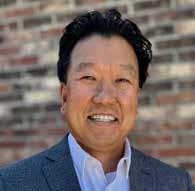
Do you believe current property tax revenue is being used effectively? How so?
Thinking about fiscal responsibility—what values should your local budget reflect? How do you plan to balance those values?
What systems would you support to hold local officials accountable when transparency standards aren’t met?
What is your stance on local government cooperation with ICE?
What is your stance on the proposed canyon gondola?
ERNIE KIM
voteerniekim.com
Much of our property tax revenue supports essential services like police, fire protection, roads and parks, which are critical to daily life in Cottonwood Heights. That said, residents deserve more clarity on how funds are allocated and whether priorities match community needs. I believe we can improve by providing clear breakdowns of spending and outcomes, so residents see the value of their tax dollars. Transparency and efficiency are key to maintaining trust in how revenue is managed.
Our city budget should reflect stability, fairness and long-term planning. Core services such as safety, infrastructure and public spaces must come first. Beyond that, we must weigh new investments carefully, making sure they serve the greatest good and don’t create unnecessary burdens for taxpayers. I support pursuing state or federal grants and public-private partnerships before turning to higher taxes. Balancing priorities requires both discipline and responsiveness to residents’ changing needs.
Accountability begins with making information easy to access and understand. I would support independent financial audits, regular reporting on major city projects, and ensuring meetings remain open and well-publicized. If transparency standards fall short, there should be clear mechanisms for corrective action— such as ethics reviews or mandatory reporting improvements. Most importantly, residents must always have a direct line to ask questions and raise concerns. A transparent government is one that consistently invites public involvement.
I believe local government should focus on community safety, infrastructure and essential services, while immigration enforcement remains the responsibility of federal agencies. When local police are drawn into federal immigration matters, it can create confusion and reduce trust between law enforcement and residents. Maintaining that trust is vital for public safety. Our resources should remain directed toward local priorities—protecting neighborhoods, improving services, and ensuring all residents feel safe engaging with their city government.
I oppose the gondola project in its current form. While we must address canyon congestion, the gondola is costly, intrusive and risks permanently altering the natural beauty of Little Cottonwood. More practical, flexible and less expensive solutions—like enhanced bus service, expanded park-and-rides, and improved road safety—can address traffic without building a massive structure up the canyon. I will advocate for solutions that balance access with preserving the environment and community character.

ELLEN BIRRELL
ellenbirrell.com
Better use of tax revenues could include scrutinizing how and what we budget such as: more thoroughly examining budget annually utilizing zero-based budgeting; better utilizing existing communication tools such as monthly newsletter and website creating easier access to relevant information; prioritizing transportation improvements based on U.S. Highway Administration’s Safe Systems for All featuring safety over speed; utilizing methods outlined in StrongTowns.org (www.strongtowns.org/journal/2015/11/11/the-strong-towns-approach) to work more effectively with residents and the building community for best outcomes
Values for our budget should prioritize resident safety on our roadways and in their place of residence, and infrastructure operations and maintenance. These are deficient in the city’s current budget.
I have advocated for past two years on council for staff to use an electronic means of listing, monitoring and sharing with council and public all projects under way in Cottonwood Heights. Most city projects are not confidential. Having a system in which all nonconfidential projects are listed and the level of progress they are in, even include projected public comment periods, and a notation once completed. This transparency will be more efficient for staff, council and residents, and build public trust. Additionally, having all new public works projects pass through a review committee that double checks them for adherence to ordinance standards and master plans with their report to council would be an improvement.
I support due process of law. I oppose municipal police assisting in any manner with ICE operations within Cottonwood Heights or surrounding jurisdictions. As of Sept. 3, I obtained the following statement from CHPD: “The city is not pursuing the 287g (arrangement between municipal and federal agencies). There have been essentially no calls of service assisting federal agencies other than a handful of cases related to felony drug or Internet crimes against children cases that involve undocumented people since January.”
Oppose. Both Cottonwood Heights residents and larger regional population need practical solutions to bottlenecking, gridlock, air/noise/light pollution associated with peak hours during ski season and year-round peak times. Practical solutions could include parking nodes located throughout SLCO in which motorists can leave their vehicles closer to where they live or lodge; enhanced bussing; ski bus facility at each major ski resort in LCC and BCC that enhances the bus experience, etc.
QUESTIONS
COTTONWOOD HEIGHTS DISTRICT 3
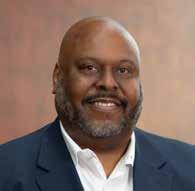
Do you believe current property tax revenue is being used effectively? How so?
Thinking about fiscal responsibility—what values should your local budget reflect? How do you plan to balance those values?
In most cases, I believe our property taxes are working to provide the resources and services we need in our communities. There is always room for improvement. For example, how the collected tax dollars are utilized to improve the lives of residents is critical.

RANDY PRAZEN
Cottonwood Heights ranks as one of the cities with the lowest property tax rates in Salt Lake County. Much of Cottonwood Heights’ property tax revenue is committed to essential contracts for public safety, so in that sense the money is being used for critical services. At the same time, I think there’s room for improvement in how we allocate funds to public safety, infrastructure and communicate budget choices to residents.
What systems would you support to hold local officials accountable when transparency standards aren’t met?
What is your stance on local government cooperation with ICE?
A budget that consists of public funds must be managed in a manner that is transparent and easily understood by community members. I will continue to openly share the priorities and expenditures of my city’s budget with all constituents.
What is your stance on the proposed canyon gondola?
What steps would you take to ensure that seniors can age in place affordably and safely in our community?
How will you protect the character of local neighborhoods?
How will you prioritize and protect proper historic restoration of existing structures?
Anyone serving the public must maintain ethical behaviors across any and all subjects. I believe in community accountability committees that focus on internal operations concerning all actions taken by elected officials.
Government officials have a responsibility to adhere to the directives set by leadership. However, when these actions create environments of fear and concern, by our neighbors, and disrupts the lives of our fellow citizens we need to take into consideration if the actions are civil and justifiable and then act accordingly in our charged roles.
I am against the Gondola as it has been proposed.
Here I will work to address growing economic constraints to minimize the impact on our aging population.
Fiscal responsibility means making sure all dollars residents contribute is used wisely and transparently. I believe our local budget should reflect the values of safety, infrastructure, and community well-being. That means prioritizing public safety through effective police and fire services, maintaining and improving our roads and sidewalks, and investing in parks and community spaces that enhance quality of life.
Transparency builds trust and residents deserve clear accountability when it falls short. I would support expanding open data practices so budgets, contracts, and decisions are easy to access and understand… I also support independent oversight. Accountability should be built into how our city operates every day.
I do not support local government acting as an extension of federal immigration enforcement. Our resources should focus on safety, infrastructure and serving all residents. Partnering with ICE undermines trust in our community. Cottonwood Heights should prioritize fairness, inclusion and local needs, while leaving immigration enforcement to the federal government.
I do not support the gondola project. I feel there are many other less intrusive options that deserve our attention.
I will support seniors aging in place by encouraging affordable, accessible housing options, providing tax relief where possible and investing in safe sidewalks and walkable streets.
I will work directly with residents, staff and my fellow councilmembers to develop decisions that take into consideration all variables to specific issues.
Here I will take the lead of our city’s volunteer community committees.
I believe in protecting open spaces, trails and parks, which are a defining part of our community’s identity. I will also work to maintain safe, walkable streets and support zoning that preserves neighborhood integrity while still allowing for responsible updates and improvements.
Cottonwood Heights should collaborate with the community and Historic Committee when dealing with any historic site. These collaborations should be transparent.
He cited several reasons behind the recommendation, including a 9.24% decline in elementary enrollment the past five years and a 49% increase in average home values in the District during the same period, making it more difficult for families to afford to live within the District’s Alta, Draper, Sandy, Midvale, Cottonwood Heights and White City boundaries.
Other contributing factors include lower birth rates, limited residential growth, and increased alternatives such as charter schools, homeschooling and the state’s school voucher program.
While the decision is difficult, several board member pointed out it’s one the board must consider to act responsibly with District finances.
According to the committee’s report, the average cost to operate a Canyons elementary school is $1.3 million annually. Patron concerns
Some parents and community members raised concerns even before the proposals were publicly announced, citing strong school communities, an accelerated timeline, the request for transparency, the need to listen to parents as resources and questions about the District’s financial priorities.
Bella Vista parent Juliana Jackson pointed out discrepancies in District spending.
She said District-level expenses total $202 million, while Bella Vista, which doesn’t have an assistant principal, costs $1.2 million to operate. Jackson added that the District’s overhead accounts for 38% of its $535 million revenue, whereas Bella Vista’s operations make up 0.2%.
This is likely just the beginning of an ongoing process, as student enrollment is projected to continue declining into the early 2030s. Future elementary school rebuilds may be needed.
Leon Wilcox
“District-level expenses far exceed elementary school costs and are the real burden to taxpayers,” she said at the board meeting. “This is where the cuts should happen.”
She also expressed concern Bella Vista would be the third elementary school closed in Cottonwood Heights and said closing the recently upgraded school — improved with bond funds approved by voters — “would
SURROUND YOURSELF WITH GREEN
be a waste of taxpayer dollars and betrays our votes.”
Personnel and property
Wilcox said the District’s goal is to retain all employees, with most teachers moving with students to their new schools. With ongoing retirements and resignations, he expects there will be openings for education support professionals as well.
Although no decisions have been made about how to use vacated school buildings, Pedersen said the District plans to retain the properties “so that as bond payments drop off in the next four to five years, we can begin rebuilding our old elementary schools. We would house the students in the empty buildings while new ones are built. We also don’t know if our student populations may begin to grow again and we will need those schools.”
Wilcox added this is likely just the beginning of an ongoing process, as student enrollment is projected to continue declining into the early 2030s. Future elementary school rebuilds may be needed.
Proposed boundary adjustments
Wilcox said keeping neighborhoods intact and aligning school feeder systems were key priorities in the committee’s boundary recommendations.

Some of the proposed boundary changes include:
• A portion of Ridgecrest shifting to East Midvale

• Parts of Granite moving to Willow Canyon and Lone Peak Elementary
• The Quarry Bend area relocating from Glacier Hills Elementary to East Sandy Elementary
• All Brookwood Elementary students, and some Oakdale Elementary students east of Highland, attending Albion Middle
• All Silver Mesa students moving to Union Middle and eventually Hillcrest High
• Some students currently attending Albion Middle would shift to Eastmont Middle to align with Jordan High
• Some Eastmont students would move to Indian Hills Middle to match Alta High’s boundaries
• All Sprucewood Elementary students would attend Indian Hills Middle
• Adjustments between Brighton and Hillcrest High School boundaries
Another change affects busing. After the 2027-28 school year, the District will no longer provide west-of-interstate transportation to Indian Hills for students living in the Mount Jordan Middle boundary. Currently, about 175 students permit to Indian Hills. Wilcox added students are allowed to apply for enrollment at any Canyons school. Those affected by boundary changes will receive preference during open enrollment, though students wanting to remain at their current school after a boundary shift will need to submit a permit application. l



Brighton High thespians take center stage with stories of history and heart
From war-torn kings to magical glass slippers, students will share stories during its 2025-26 theatre season.
By Julie Slama j.slama@mycityjournals.com
Brighton
High’s theatre students will kick off a packed performance season with Shakespeare’s “Henry VI, Part III,” fresh off their return from the 49th annual Utah Shakespeare High School Festival in Cedar City. In addition to the ensemble piece, students will compete in scenes, monologues and the Tech Olympics.
The community is invited to a free showing of the play at 7 p.m. on Oct. 6 in the school auditorium, 2220 Bengal Blvd. The 30-student cast explores the theme, “Uneasy lies the head that wears the crown.”
“The histories center around who deserves the crown and what it means to be a good leader,” said theatre teacher and director Makayla Conner. “Our piece captures the finale of the War of the Roses, where heroes meet their fate.”
Next up, about 100 students will stage “Cinderella” with performances set for 7 p.m., Nov. 20-22, and a 2 p.m. Saturday mati-
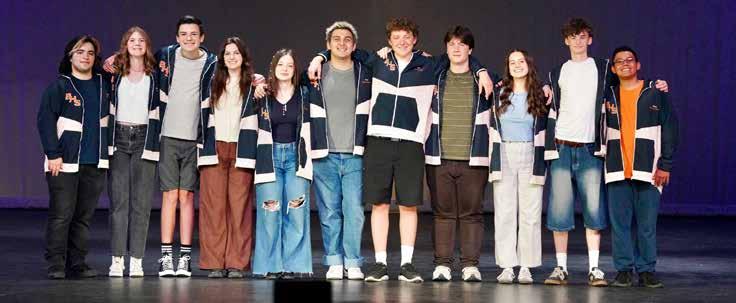
nee. Tickets are $10 for adults and $8 for children 12 and under and can be purchased at brightonbengals.org.
Students began preparing this summer, learning waltzes and conceptualizing sets.
Conner described the show as “a modern take” where Cinderella is more outspoken and emphasizes kindness.
“It’s a valuable lesson for kids to learn
Better Shelves. Custom Solutions.

how to raise each other up rather than tear each other down,” she said.
In January 2026, students will travel to Los Angeles to attend workshops at UCLA and Stella Adler Academy of Acting & Theatre, tour major television studios and see the Broadway tour of “The Notebook.”
A classical drama—still to be announced—will run March 5-7, 2026, at 7

p.m., with a 2 p.m. matinee on Saturday.
“We’re looking at Greek theatre options, because the kids don’t really get exposed to a lot of classics other than Shakespeare,” Conner said.
The competition season follows, with regionals March 18-19, 2026. State individual events will be hosted at Brighton April 18 and the ensemble competition April 16-17.
Brighton’s season closes with “Peter and the Starcatcher,” running April 30-May 2, 2026, at 7 p.m., plus a 2 p.m. Saturday matinee. Tickets are $10 for adults and $8 for youth. The show, ideal for middle schoolers and up, is led entirely by 20 advanced production students handling everything from costumes to directing.
“It’s a good learning experience for them to take on different aspects of the show,” she said. “I picked it because I love the story and how it is a creative. They won’t build a very visual set. It will come from their imaginations. I love the idea of the kids collaborating on ways they can show and create something that isn’t there.”
Students will offer three improvisation shows, with the first one at 7 p.m., Dec. 5. There also will be shows in March and May 2026. Tickets are $5.
“Improv helps students develop muscle that allows them to kind of think on their feet. As an actor, you need to be able to come up with different ideas and bring different energies to characters, so that muscle they use during improv allows them to get more comfortable making choices they wouldn’t normally make,” Conner said.



About 90 students are active in Brighton’s drama club, which hosts monthly social events such as kickball, candy corn bingo, and a fall Friendsgiving. They also attend Hale Centre Theatre productions and support the Utah Food Bank through a food drive.l
Brighton High’s theatre presidency provides leadership opportunities within the drama program. (Photo courtesy of John Glime)
Bridget Smit begins cross country season in the lead
Bridget Smit began as a freshman phenom at Brighton and continues into the new season.
By Jerry S. Christensen j.christensen@mycityjournals.com
Brighton High’s own Bridget Smit won the Timpanogos Invitational in early September with a time of 17:54 in the 5K race edging Highland’s Maddie Reeder, who finished second in 17:57.9. Smit beat out the fastest 243 varsity runners from 49 Utah high schools of all classifications. Sixty-eight Brighton High School girls and boys competed in the Timpanogos Invitational and are improving every week in hopes of winning Region in October.
“She has consistently improved in performance,” said Brighton cross country coach Angie Welder. “For example, last year, as a freshman, she finished the Timpanogos Invite in 18:56, finishing in fourth place. This year, at the same race on Aug. 29, she finished in 17:54 winning the highly competitive varsity girls race.”
A year ago, Smit was the fastest freshman in the Pocatello 2025 Simplot Games girls’ 1600 meters with a time of 5:07.20. “Bridget, as a freshman, was very close to

breaking the 1600m school record of 5:03 set by Lia Belle Selander (BHS ‘23) and the 3200-meter school record of 11:00 set by Caroline Rupper (BHS ‘22),” said Annie Selander, assistant track team coach. Last spring at State, Smit ran to third place

in 1600m and fifth place in 3200m.
Smit holds the Brighton school record for the 3 mile and 5K races. Her 3-mile personal record is 17:54 which was her time at the cross country state championship last year. That time was the fastest finishing time by any freshman girl in the entire state. The previous BHS record was held by Caroline Rupper with a time of 18:42.

She is currently poised to break her own record this year at region and state. l

Brighton’s Bridget Smit sprints to finish the Timpanogos Invitational in the lead. (Photo David Edmunds)
Halloween comes to class—with rules
Spooky season is approaching and for elementary schools that means combining costumes, classwork and community with safety.
By Julie Slama j.slama@mycityjournals.com
As about 600 Glacier Hills elementary students parade through a White City neighborhood in costume on Halloween morning, safety remains top of mind for Principal Julie Winfree.
“We will have police officers lead, follow and patrol intersections and we’ll have teachers, aides and extra staff with walkie-talkies walking with the students,” she said, urging parents to ensure kids wear appropriate shoes and coats. “It’s a fun opportunity for the parents and community to sit out on their driveways and see the students parade by; they line the streets.”
Still, she notes, “It’s also a day of learning so we want students to wear costumes they can learn in.”
That means no masks, weapons or facsimiles of weapons—guidelines shared across most Salt Lake Valley schools.

Luke Allen, Granite School District’s associate director of communications, said costumes must follow regular dress code rules.
Those guidelines include students must be fully dressed, with clothing that covers the body appropriately and includes safe footwear. Students also may not cover



their face unless it is for religious, health or medical reasons. Costumes or clothing may not display images, symbols or language that depict obscenity, lewdness, hate, violence, drugs, alcohol, tobacco or gang-related activity, and they may not include items that could be used as a weapon. Student attire and expression also must not cause significant disruption to learning.
“Halloween can be a fun opportunity for students to celebrate together, but we remind families that costumes at school must follow the same rules as everyday attire,” he said. “Our focus is always on ensuring a safe, respectful and positive environment for all students.”
Many of Granite District’s 26,000 elementary students participate in Halloween parades, typically held outdoors, weather permitting.
Canyons School District Risk Manager Ryan Jakeman advises parents to consider different costumes for school and trick-or-treating.
“Masks, which block visibility, and facsimiles of weapons are a ‘no-go’ at school,” he said, recommending face paint instead. “While costumes are encouraged, safety is also a priority for students.”
Canyons spokesperson Kirsten Stewart adds: “We’ve found outdoor parades, provided you can identify a safe route, are a great way to involve the community.”
Jordan School District also has shifted most parades outdoors post-COVID.
Jordan District’s Director of Communications Sandy Riesgraf said schools typically remind families: “no masks, weapons or excessive face paint. The school staff needs to be able to identify students.”
Riesgraf added costumes should
be wearable all day and follow district dress codes.
At Falcon Ridge Elementary in West Jordan, Principal Aaron Ichimura said dressing up helps build connections between students and administration.
“They get to learn we’re human and enjoy doing the same things they enjoy,” he said. “Halloween traditions are deeply rooted in Utah.”
The school holds a PTA-run festival with students rotating every 30 minutes with seasonal grade-level activities.
“We’ll send out a Parent Square message reminding students not to wear masks, because we want to be able to identify students, no weapons or facsimile of weapons, no blood or violent costumes,” Ichimura said. “We want Halloween to be a fun time for everyone.”
Like other principals, Ichimura emphasized classroom learning.
“We encourage staff to plan learning activities, and they can be ideas linked to Halloween like stories or math so it can be a creative, fun approach to learning,” he said.
In Murray School District, individual schools set safety guidelines.
“Halloween is a fun and exciting time for our students, and we support school administrators in creating a positive and safe environment by developing traditions and practices unique to their school,” said Doug Perry, Murray District’s communication officer. “We also encourage families and the community to prioritize safety when choosing how to celebrate, both at school and beyond.” l
Many schools’ guidelines encourage no masks, weapons or facsimiles of weapons and appropriate costumes and footwear in good taste to be worn during Halloween parades and festivities. (Julie Slama/City Journals)




























Senior show demonstrates the art of aging brilliantly
The exhibit honored the beauty of experience and lifelong expression.
By Peri Kinder peri.k@thecityjournals.com
Abrokenswing hangs from a tree branch, next to an empty house depicted in colors of brown and gray. The picture is titled “Where Have All the Children Gone?” and was painted in watercolor by Millcreek resident Ralph Morelli to depict the loneliness he felt when he didn’t visit with his children and grandchildren.
Morelli’s painting was one of more than 200 entries in the third annual Senior Art Show, sponsored by Salt Lake County Aging Services. Held at the Salt Lake County Government Center (2001 S. State St.), the display featured art in every medium, created by seniors aged 60 and up from around the county.
“Art allows us to express feelings that we might otherwise not be able to give verbally and that’s why I believe it’s so important,” Morelli said. “My art is called emotionalism, because I’m not going for realism. I can express myself with just a few brush strokes. That’s why I think art is important. It allows us to tap into that inner self.”
The show included displays of pottery, watercolor paintings, sculpture, needlework, quilts, oils and acrylic paintings, photogra-
phy and carvings. Many of the works were done at county senior center locations.
Afton January works with the county’s aging services program. She said the pop-up gallery is a fun way to bring exposure to artwork created by the state’s seniors and give them a chance to show off their talents. Last year’s event had fewer than 90 entries, but the 2025 show had more than double that number.
“It’s frankly a smashing success this year. The skill level is off the charts,” January said. “It’s one of those events that’s been gaining momentum, because it’s a fun opportunity for folks, especially our senior center participants, who represent most of the artists here, to take what they do at those centers and bring it into the community in a way that really feels intergenerational and community spirited. And it’s a fun opportunity for our older adults.”
Millcreek resident Eve Cole entered several artworks at the show, including a drop-pour painted vase and picture, and a framed arrangement of dried flowers. Cole said her sister-in-law got her interested in art during COVID, so they FaceTimed together while creating fun art pieces.
Her painting, “Black Bird in Flight,” was made with a drop-pour background, accented with black and white.
“I showed it to my husband and he said, ‘It’s birds flying.’ I never even would have
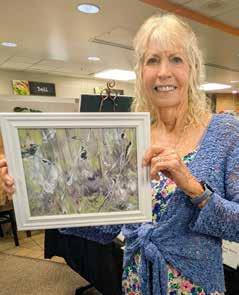
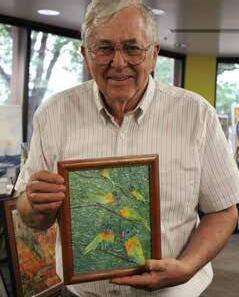
thought of that,” Cole said. “It’s just so rewarding. It just makes me happy.”
More than 300 visitors at the art show voted on their top three favorite entries. The Director’s Choice winner was Dewey Hansen (River’s Bend Senior Center) and the top three vote recipients were Deborah Chiquito (Riverton Senior Center), Shu Yamamoto (Taylorsville Senior Center) and Margi G Owens (Kearns Senior Center).
“Our older adults, many of whom are retired, get to showcase their work and feel like they’re a part of something big and public,” January said. “It gives them some recognition.” l
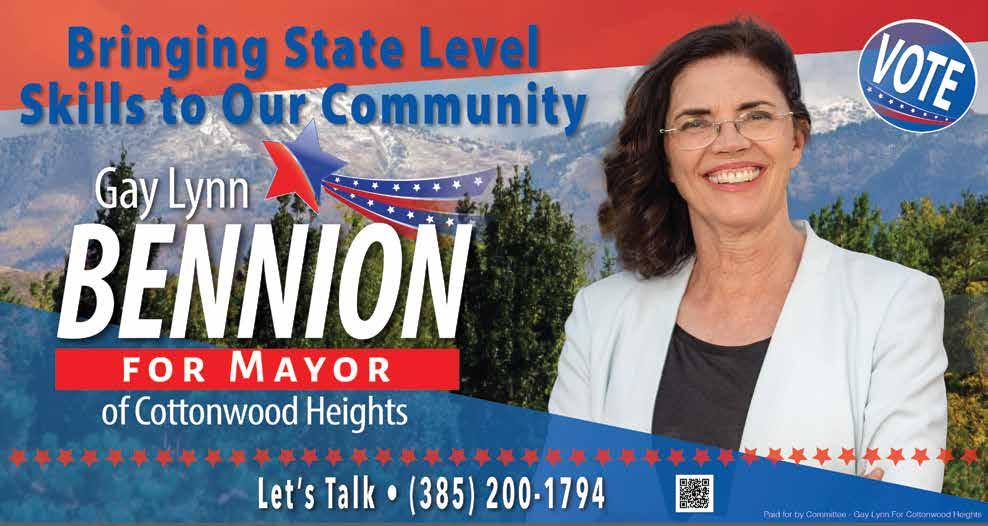
The Director’s Choice winner of the Salt Lake County Senior Art Show was Dewey Hansen, a regular attendee at the River’s Bend Senior Center in Salt Lake City. (Photo courtesy of SLCounty)
Eve Cole holds her art show entry, “Black Bird in Flight.” The Millcreek resident started painting during COVID. (Peri Kinder/City Journals)
National Blue Ribbon School – recognized for academic excellence.
STEAM & Makerspace Programs – inspiring creativity and innovation.
Beverley Taylor Sorenson Arts Learning Program - enriching students through the arts.
80+ Years Serving Our Community - a foundation for generations of Cottonwood Heights families.

Canyons School District spends $202,000,000 on district overhead each year. This doesn’t go directly to our schools. Meanwhile, keeping Bella Vista Elementary open costs only 0.02% of total taxpayer revenue to the District. In contrast, district overhead takes up 38% of taxpayer revenue.
Canyons School District Expenses by Organization Transparent Utah – Office of the State Auditor transparent.utah.gov/entity_details.php
The Power of Human Connection in Salt Lake County
is in a paradox. We are known as one of the most social states in the nation, yet our residents also report some of the highest feelings of loneliness. State health surveys show that nearly one in four Utah teens in 2023 and about 6% of adults in 2021 said they often or always felt, “People are around me but not with me.” That’s a sobering reminder that being surrounded by people is not the same as feeling connected to them.
The U.S. Surgeon General defines loneliness as the distress of not having adequate meaningful connections, while social isolation is the objective lack of social roles, relationships or interaction. Both are harmful. Loneliness raises the risk of premature death by 26%, and social isolation by 29%. Utah data show youth are particularly vulnerable, with loneliness peaking around 10th grade. At the other end of life, older adults may report less loneliness, but many live alone or are less socially active, leaving them isolated—and at increased health risk— even if they say they feel fine.
It’s not all bad news. Among adults, reported loneliness has risen from 5% in



2019 to 16% in 2024. While that increase seems alarming, some experts believe it reflects growing awareness. More people are recognizing that connection matters, which may encourage them to seek help or create new relationships. Meanwhile, Utah’s highest years for suicides (2017) and overdose deaths (2022) are behind us, with rates trending slightly down. We should not ignore loneliness, but perhaps our awareness is a hopeful step toward stronger, healthier communities.
Addressing loneliness requires all of us. Parents can set the stage at home by turning off screens, setting aside phones, listening closely, and modeling the conversations they hope their children will have with others. Simple family meals



and one-on-one time give youth safe spaces to share what they’re really experiencing.
Schools and businesses also play a role. Policies that encourage real connection—team projects, buddy systems, carpools, phone-free zones or mentoring programs—help students and employees build relationships that strengthen both well-being and performance. Identifying at-risk youth early and linking them with mentors can make a world of difference.
Local governments can create environments where connection naturally happens. Parks, libraries, recreation centers and public transportation all serve as “third spaces” where neighbors can meet. Programs like Salt Lake County’s Free Youth Rec Passes, summer events, farmers markets and free-fare zones lower barriers and invite people to gather. These aren’t just amenities; they are investments in the health and strength of our community.
Faith groups, sports teams and even traditions around food and gathering offer additional pathways. Whether it’s cheering together in the stands, sharing
a meal or volunteering at church, these experiences weave the fabric of community life. With creativity, we can support system-level changes that expand these opportunities in healthy ways.
In the end, the responsibility rests with each of us. Teens can choose to include someone sitting alone. Adults can prioritize friendships, check in on a neighbor or carve out time for family. Older adults can accept invitations or invite others into their routines. Each of these choices is small, but collectively they build the kind of community Salt Lake County is known for—caring, connected and resilient.
So I encourage you to pause and ask yourself: Am I truly connecting or just surrounded? Whether you are a student, a parent, a business leader or a retiree, you have the power to strengthen the web of relationships that hold us all together. In Salt Lake County, our greatest strength doesn’t come from policies or programs alone—it comes from people. When we choose connection, we choose health, hope and a brighter future for our community.

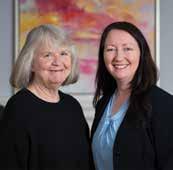





Life and Laughter - Magic is a Superpower
Back in the day, it didn’t take much to be labeled a witch. Did you own a cat? Witch. Did you have a birthmark? Witch. Did you use herbs, wear a cape, know how to read or lure children into your gingerbread-flavored home so you could eat them for dinner? Witch.
I’m just saying, the bar was low. Starting in the 1450s, witch hysteria swept across Europe, lasting for centuries. Intense warfare, hardship, famine and disease meant only one thing: it was time to burn the witches, because obviously.
Nearly 60,000 people were tried and killed as witches. More than 80% were women and 60% were over the age of 40. It was a gendercide that wiped out generations of women. Many were healers, midwives, widows and property owners.
They’d reached a time in their lives where they were fine being alone, with maybe a cat or two. They just wanted a nice broom, a boiling cauldron of soup and a Pinterest board of “Witchy Reads.”
Many women step into their power once they hit 40, but give women power and there’s going to be trouble. Killing the older generations meant wisdom was lost forever, which is probably why we have mini golf sets for the toilet.
Like Labubu and Meta (and just as

diabolical), witch trials were big business. Women were arrested, property was seized and people flocked to churches because no one wants to accidentally sell their soul to Beelzebub.
The witch trials also created a disconnection between women; a fear of gathering, the angst of being seen as a “coven” when all you wanted to do was watch the “Real Housewives of Salem.” Women stopped socializing because having a friend for tea could end in a hanging. (And you thought your book club was stressful.)
I’m a lover of all things witchy, a devotee of strong women using their magic for good. A witch is a woman who speaks truth to power, without shame. Imagine a combination of Dolly Parton, Oprah Winfrey and Ruth Bader Ginsburg, a woman so powerful even the Puritans would have been like, “Nope, not today.”
You see, a witch hunt creates a cul-
ture that undervalues women. When you describe women as shrill, chatty, feisty, mousey, sassy, emotional, slutty, hysterical, irrational or hormonal, those words strip away power.
How many of these words are used to describe men? Almost zero. At the worst, men get labeled as “grumpy,” and somehow that becomes “distinguished.”
There’s still a witch hunt going on today. Saying “women’s rights” to certain groups triggers frothing at the mouth and a call for the ducking stool.
Women want to be believed, heard and have the ability to live without violence or discrimination. We want affordable physical and mental health care, an equal wage and respect. Is that insane, deranged, unhinged or any other word used to lock women up in asylums, as recently as 1967?
A witch stands on her own. She embraces her age, her knowledge and her intuition, without fear. It’s not surprising that interest in witchy practices is rising. You can learn spells on TikTok, craft a voodoo doll on YouTube and banish your ex to the depths of Detroit using a candle, cayenne pepper and a squeeze of lemon. Science, obviously.
For women who have felt disenfranchised in their communities, religions and

workplaces, witchy practices are a way to find their power. It isn’t an excuse to turn women into barbecue.
I associate magic with creation, and women are the ultimate creators. Women are magic, able to run empires, sing lullabies and look fabulous in a cape. Do you need someone to change the world for the better? Find a witch.










MEET DR. HARARAH, M.D.
Dr. Hararah, a triple board-certified physician, completed his residency in Family Medicine at NYU Langone and a fellowship in Undersea and Hyperbaric Medicine/Wound Care at SUNY Upstate University Hospital. With additional training in Bariatric Medicine and certification from the American Board of Obesity Medicine, he brings expertise in primary care, dive medicine, bariatric medicine, and clinical hyperbarics.
A firm believer in the biopsychosocial approach, Dr. Hararah views patients as complex individuals whose lives and experiences shape their healthcare. Known for his compassionate care and dedication, he listens intently, prioritizes your well-being, and works to find the best diagnosis and treatment plan.
As the owner of Blackstone Medical, Dr. Hararah is committed to helping you achieve your best health.
OUR SERVICES
Primary Care:
• Annual preventative physical exams
• Cancer screening
• Sick visits
• Specialist referrals
• Medication refills
• Chronic disease management
Specializing in Wound Care:
• Chronic, non-healing wounds
• Acute, minor wounds
• Diabetic foot ulcers
• Venous ulcers
• Arterial ulcers
• Pressure injuries...and more!
Patients First:
“
Dr. Hararah understands the daunting and sometimes demoralizing feelings health care sometimes causes, and wants patients to be truly seen and valued as human beings.”


